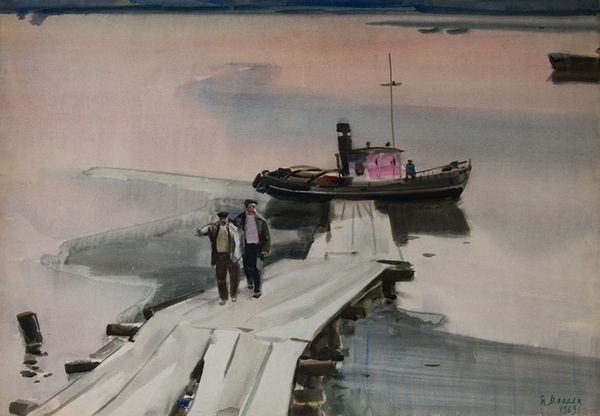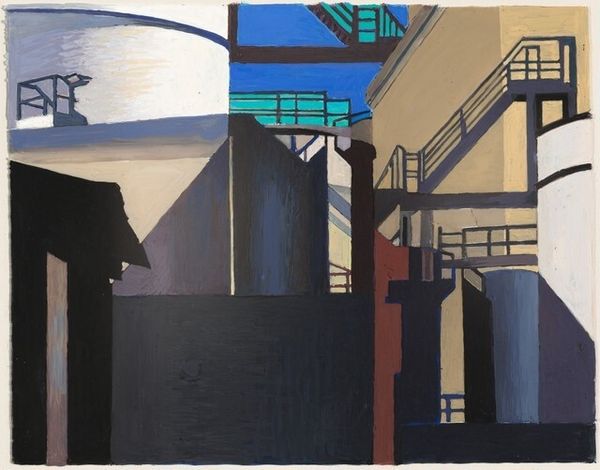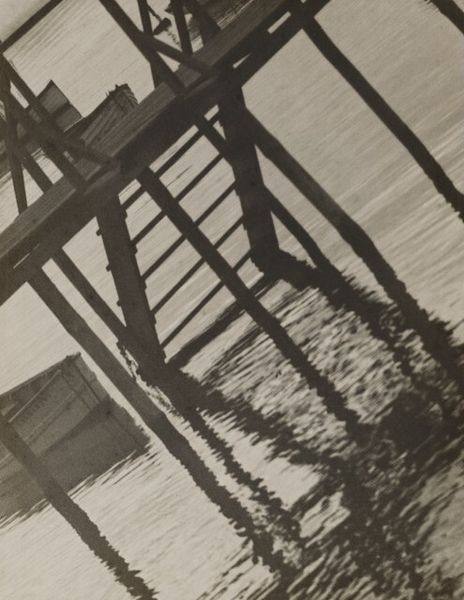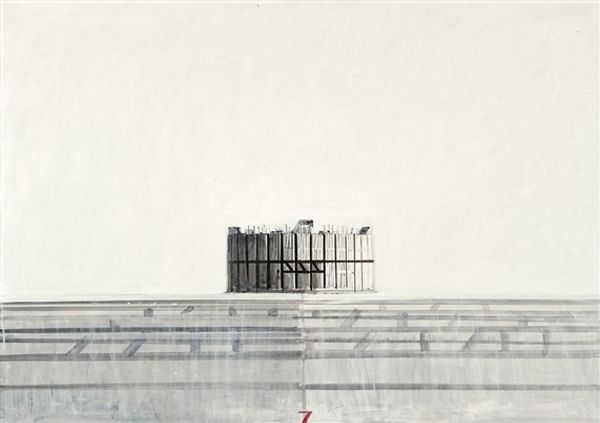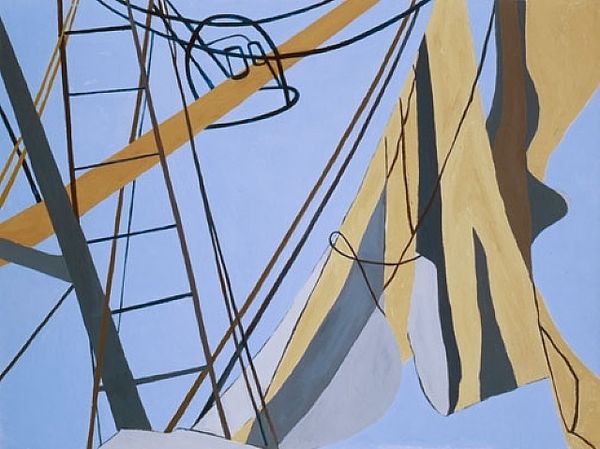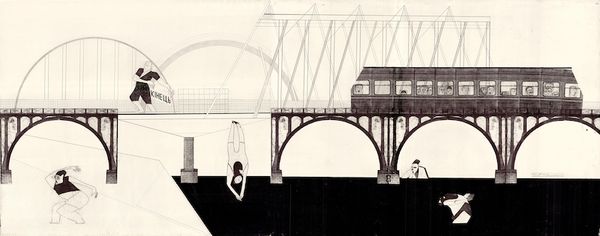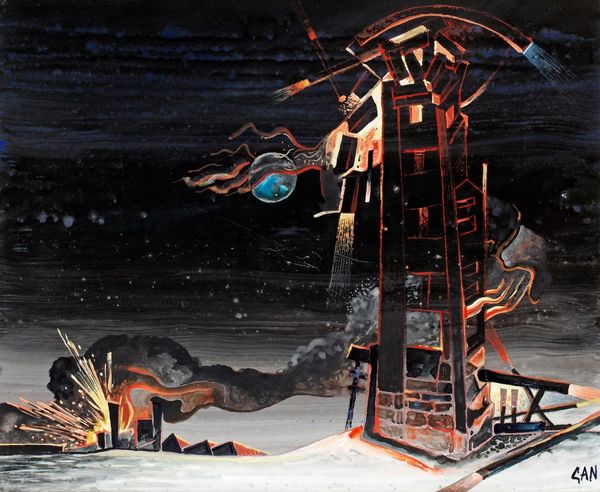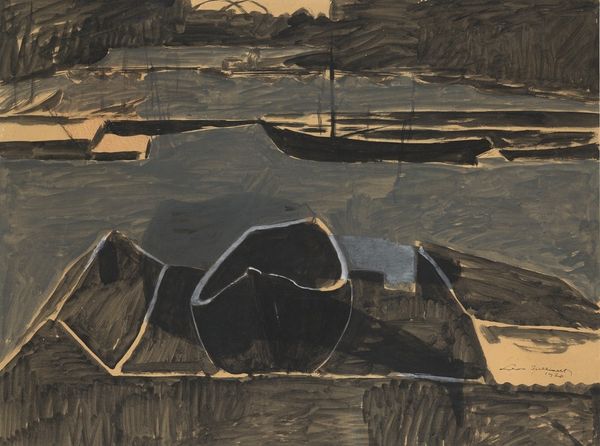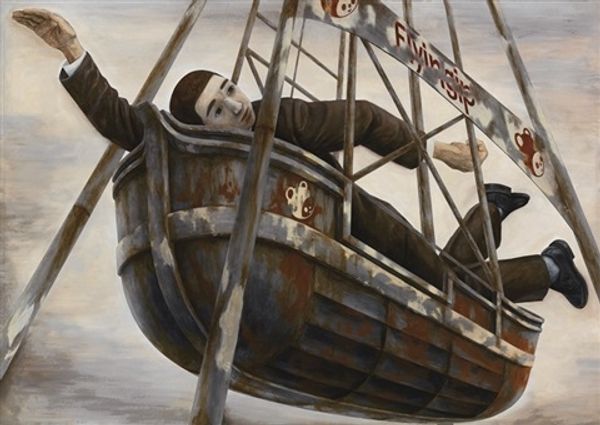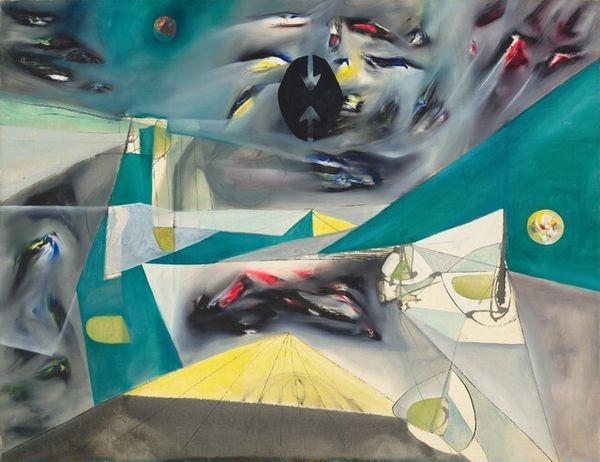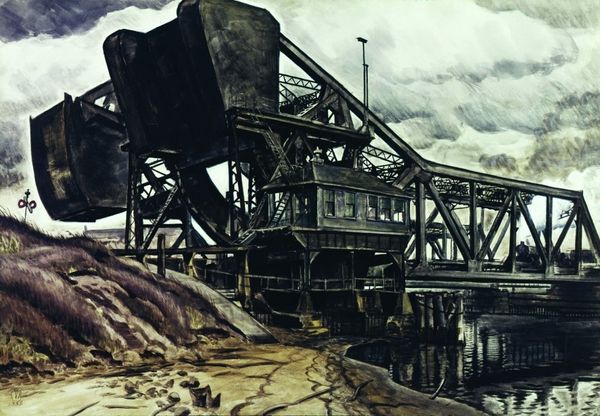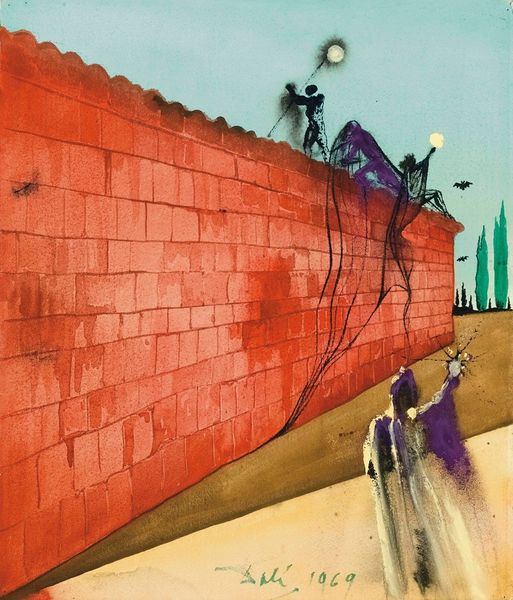
oil-paint
#
oil-paint
#
landscape
#
soviet-nonconformist-art
#
oil painting
#
cityscape
#
modernism
#
realism
Copyright: Tahir Salahov,Fair Use
Curator: Here we see "Over the Caspian Sea" by Tahir Salahov, an oil painting created in 1961. What's your immediate take on it? Editor: Bleak, and strangely beautiful. The steely grays and blues give a real sense of industrial isolation. It almost feels like a scene from a dystopian film. Curator: The limited color palette is quite striking, isn't it? Note the touches of red at the base of the pilings, a symbolic flicker of hope against the overwhelming gray. Editor: Or a marker of the corrosion eating away at the structure. Considering this was painted during the Soviet era, do you think it's a critique of the dehumanizing effects of industrial labor? The figures look so small and anonymous. Curator: That’s an interesting reading. One might consider it not merely a critique, but more so an ambiguous statement, perhaps hinting at the individual’s insignificance within a vast, impersonal system, yet suggesting something quite grand about the system itself. The cityscape, stark as it is, feels enduring and powerful. Editor: Right, because these paintings from the Soviet era are rarely overt about their political messaging. Instead, we get these muted suggestions, images ripe for multiple interpretations, about what it means to live under such a regime. Also the Helicopter at the top, maybe indicates of social mobility ? Curator: A fleeting hope soaring amidst the grim reality. Speaking of movement, did you notice that there seems to be a recurring emphasis on diagonals? From the clouds above to the structural steel—they all imply motion. I find myself asking whether it represents a progression, or perhaps disruption and instability. Editor: The whole painting feels unbalanced and unsettling. Thinking about identity, gender, race...who are these workers? What are their lives like? Are they choosing this life or being forced to? The lack of specifics creates an almost universal image of workers lost to progress. Curator: These questions become particularly pointed considering Salahov's position within Soviet art. In many ways, this canvas exists to transcend a simple, didactic story and move us into an aesthetic of emotional response. The landscape's sheer atmospheric density provokes a psychological tension. Editor: I’m still stuck on the faces of these workers: they can be literally anyone... They become cyphers within a system, stand-ins for a larger historical force. Curator: Yes. And while their story is shrouded in mist, Salahov manages to tell us something very intimate about their perseverance in the face of unrelenting modernity. Editor: So perhaps it’s not just bleakness we’re seeing but also a quiet defiance, then. Food for thought!
Comments
No comments
Be the first to comment and join the conversation on the ultimate creative platform.
